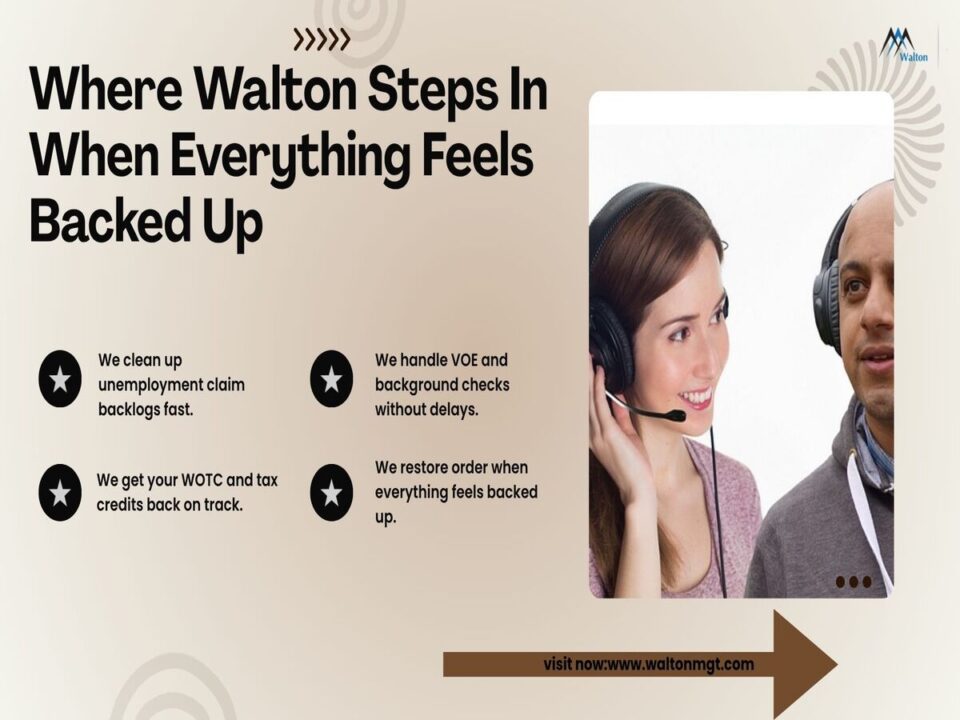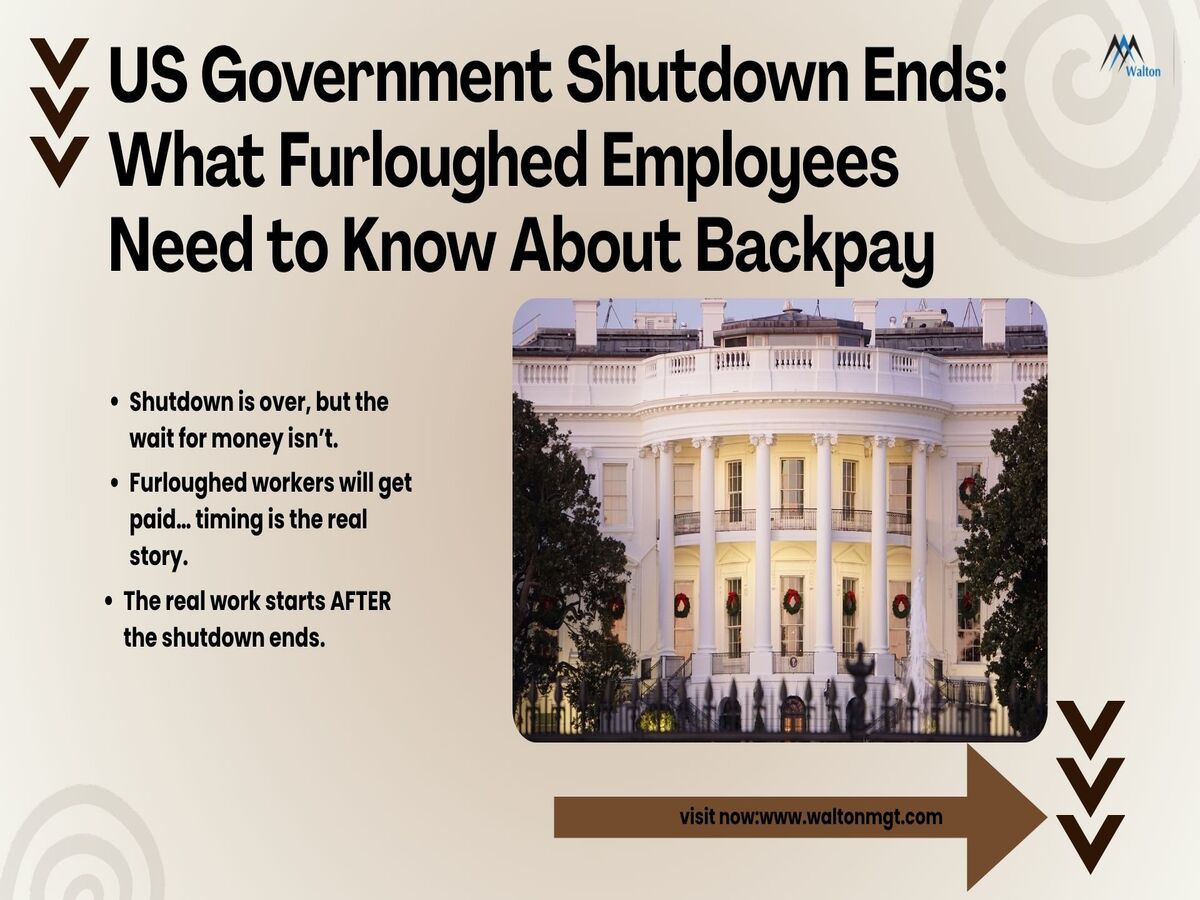Shutdown’s Finally Over and People Want Answers
When the shutdown ended, the country exhaled. But relief didn’t last long, because furloughed workers wanted one answer: When will the money show up?
People had spent weeks refreshing their bank apps and juggling bills with no income coming in. They weren’t asking for anything extra, just the pay they earned. And until those deposits move, the shutdown may be over, but the stress hasn’t fully lifted.
What the White House Actually Said About Back-pay?
After weeks of silence and mixed messages, the one thing workers wanted from the White House was a straight, clean answer. No political flavor. No speeches. Just the truth. And for once, the message came through without the usual fog. Furloughed workers would get paid for every day they were locked out of their jobs. No games. No hedging. Just a clear yes.
That kind of clarity hits hard when you’ve been stressing over rent, groceries, gas, and everything else that doesn’t stop just because Washington stalled. Hearing that the pay is actually coming doesn’t fix everything, but it does pull a little pressure off your shoulders. It reminds you that the time you lost wasn’t forgotten.
Still, getting the promise and actually seeing the deposit are two very different things. Every federal agency has its own rhythm, and some of them move like they’re stuck on a frozen computer screen. Payroll files have to be reopened. Timekeeping records need to match. Internal reviews need to be cleared. It’s a whole shuffle of paperwork that has to line up before anything hits your account.
But underneath all the technical stuff, the heart of it was fairness. The shutdown wasn’t caused by the people who lost their paychecks, and they shouldn’t be the ones paying the price for it. At least this time, the White House didn’t pretend otherwise. They acknowledged the hit workers took, and they committed publicly, something people could hold onto while everything starts up again
How Back-pay Will Likely Roll Out
Everyone wants one thing right now. A real timeline. Not vibes. Not guesses. Just a date that says, “Your money hits here.” And even though the government didn’t hand out a perfect schedule, we’ve seen enough shutdown recoveries to know the pattern. It’s messy at first, then it starts to move, and eventually the paychecks land.
Agencies Are Basically Digging Out of a Paper Mountain
The second a shutdown ends, agencies open the floodgates on everything that was stuck in limbo. Payroll records. Leave balances. Furlough codes. Timekeeping logs. All of it comes roaring back at once, and teams have to sort through it before anything else can happen.
Some offices jump into cleanup mode right away. Others feel like they’re running on an internet connection that still makes dial-up noises. But one way or another, the process starts moving behind the scenes even if workers can’t see it.
This is where payroll services teams inside agencies take over and start stitching everything back together.
Your Backpay Usually Gets Sent Through the Normal Payroll Track
Most workers don’t have to do anything special. No extra forms. No new requests. No chasing someone in HR. Your back-pay runs through the same setup you always use.
The deposit hits the same account. It comes through the same payroll company. It flows through the same pay-rolling software the agency uses for every cycle.
And honestly, that’s one of the few simple parts of this entire process. At least the payment path doesn’t change.
Timing Can Feel All Over the Place
This is the part everyone hates. You and your coworker might have the same job title, same agency, same furlough dates, yet still get paid at completely different times.
It’s not a mistake. It’s just how giant federal systems wake up after sitting frozen. Some agencies breeze through the backlog. Some crawl. A few feel like they’re moving pixel by pixel.
But the outcome stays the same. The back pay lands. Every dollar that’s owed eventually shows up.
Real Talk
If you’ve been refreshing your banking app like it’s a slot machine, you’re not the only one. Everyone’s watching for movement. But even when it looks dead on the surface, the gears are turning underneath. The files are being processed. The checks are lining up. And the money is on its way.
How This All Hits Employers on the Ground
The Backlog Hits All at Once
When the shutdown ends, employers don’t get a gentle restart. Everything that was frozen suddenly comes back online, and HR and payroll teams get hit with a stack of work that builds up in total silence. It’s the kind of rush that shows up without warning, and every department feels it.
Claims Flood In Immediately
Workers often file an unemployment insurance claim when pay stops, sometimes because they qualify and sometimes because they’re unsure what else to do. By the time the shutdown ends, employers are staring at real claims, duplicate claims, and some that shouldn’t exist at all. Sorting them out becomes the first big job on the list.
Hiring Backlogs Come Roaring Back
Hiring doesn’t freeze during a shutdown, but the systems behind it do. So when everything starts moving again, HR teams are buried in background verification of employment tasks and trying to complete every employment background check that got stuck. Requests tied to background checks and employment pile up fast, and VOE requests hit as soon as federal systems reopen.
Payroll Takes Time to Recover
Behind the scenes, payroll services have to connect missed cycles, fix old entries, and get everything working again inside each agency’s payroll company system. Employees want updates right away, and employers are stuck trying to answer questions while also trying to figure out what broke during the shutdown.
Why the Restart Feels Heavier Than the Shutdown
All of these tasks hit at the same time. None of them can wait. And that’s why employers feel the pressure more after the shutdown than during it. They’re not just returning to normal; they’re cleaning up a long, complicated freeze that affected every part of their workflow.
Where Walton Management Steps In When Everything Feels Backed Up?

When the shutdown lifts and agencies start moving again, employers don’t just need speed. They need accuracy. And that’s exactly where Walton makes a real difference.
Straightening Out the Claims Pile
Our team handles the messy side of unemployment insurance claim reviews, so nothing slips. We manage responses, track filings, and keep everything aligned with state rules. It keeps your HR team from drowning in paperwork and helps get claims closed faster.
Helping With VOE and Background Requests
The moment federal systems reopen, VOE requests and background checks flood in. Walton moves fast on verification, so your hiring process doesn’t stall. We support background verification of employment and VOE documentation without slowing your workflow.
Getting Back To WOTC And Tax Credits
Shutdown chaos can interrupt on boarding, and that affects your Work Opportunity Tax Credit flow. Walton cleans it up and keeps every WOTC record on track so you don’t lose out on credits you earned.
Why Companies Lean On Us After Shutdowns
Businesses trust Walton because we don’t just process claims, we make sure every WOTC credit, every claim response, every VOE request, and every payroll step is handled with real care. It brings order back when everything else feels scattered.
What Happens After a Shutdown Finally Ends
The end of a shutdown always feels a little strange. Everything that was frozen suddenly wakes up, but people don’t snap back as quickly as the government does. Workers have been waiting, checking their accounts, trying to stretch whatever savings they had left, and the first real sign that life is settling again is when backpay starts moving.
The White House already made the promise. Furloughed employees will get paid for the days they were out, and the deposit will run through the same payroll setup they’ve always used. No extra forms, no hoops, no complicated steps. It just depends on how fast each agency clears its backlog. Some offices will rush through it. Some will inch along. It’s uneven, but the money does come.
On the employer side, the pressure looks completely different. While workers wait for deposits, employers get hit with a stack of unfinished work. Unemployment filings need to be sorted. VOE requests that were stuck in limbo come back to life. Background checks restart. WOTC files open again. It’s a lot to handle at once, especially when every department is trying to catch up and get back to normal at the same time.
There’s a kind of quiet relief that settles in once the shutdown ends. Not excitement, just a steady feeling that things are finally moving the way they’re supposed to. Pay is coming. Systems are waking up. And everyone can finally start looking forward instead of wondering what comes next.
Conclusion
And once everything starts moving again, people finally get space to breathe. Workers see progress in their accounts, employers watch the backlog shrink, and the pace of day-to-day life begins to feel normal again. If you need guidance during this process, feel free to Contact Us at Walton Management. The shutdown may have caused the disruption, but the recovery brings a sense of direction that everyone needed.
In the end, the real relief comes from momentum. Paychecks landing, files clearing, systems syncing, teams catching up. It’s not instant and it’s not perfect, but it’s movement, and after weeks of waiting, that’s what matters most. The country moves forward, workplaces reset, and everyone finally gets the chance to step out of the pause and into whatever comes next.

